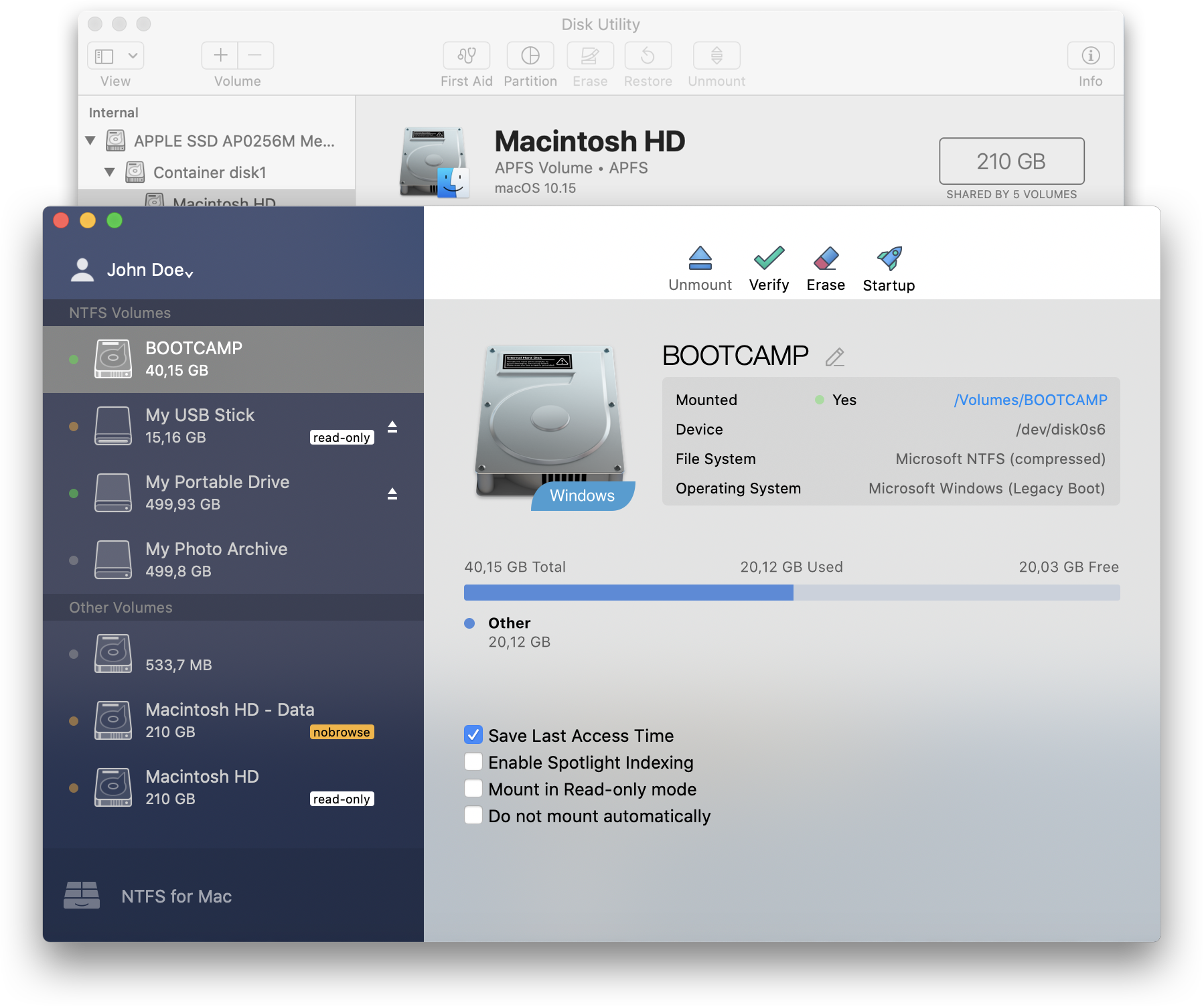

- #Ntfs read and write for mac for mac#
- #Ntfs read and write for mac install#
- #Ntfs read and write for mac drivers#
- #Ntfs read and write for mac update#
That is, not until we disable System Integrity Protection. Therefore, we can't simply swap out the binary by using sudo and running ln. It restricts the root account and limits the actions that the root user can perform on protected parts of OS X. System Integrity Protection is a security technology in OS X El Capitan that's designed to help prevent potentially malicious software from modifying protected files and folders on your Mac. This was a pretty easy thing to do before OS X 10.11 El Capitan, but due to System Integrity Protection, it is now slightly harder. To get NTFS-3G to work, we need to replace the built-in /sbin/mount_ntfs binary, which is linked to Apple's NTFS driver, with NTFS-3G's mount_ntfs.
#Ntfs read and write for mac install#
Next, let's finally install NTFS-3G via Homebrew: brew install homebrew/fuse/ntfs-3g Replacing Mount_NTFS
#Ntfs read and write for mac update#
In any case, go ahead and update the Homebrew formula: brew update If you don't, install it using this one-liner: ruby -e "$(curl -fsSL )" Verify that you have Homebrew installed by running: brew -v But not so fast, we need Homebrew for that. Once that's done, we can go ahead and install NTFS-3G. Note: Make sure to select the MacFUSE Compatibility Layer in the installation options. It's required by NTFS-3G, so let's go ahead and install the latest OSXFUSE (3.x.x) from here:ĭownload the latest osxfuse-3.x.x.dmg attachment, mount it, and install it, as with any other. So basically, it's a way for developers to extend OS X's native file handling APIs to other file systems. As a user, installing the OSXFUSE software package will let you use any third-party file system written atop OSXFUSE or MacFUSE, if you choose to install the MacFUSE compatibility layer. NTFS-3G is an NTFS read/write driver that is free and open-source, and there don't seem to be any corruption issues arising from using it.įUSE for OS X allows you to extend OS X's native file handling capabilities via third-party file systems.
#Ntfs read and write for mac for mac#

Therefore, I strongly advise against this method. Luckily, hot-plugging the drive to Windows 7 and running dskchk fixed the issue, but other people reported losing all of their data because of these faulty drivers. I tried copying 4GB worth of data to an NTFS volume this way, and the transfer just failed half-way, rendering the disk inaccessible and my computer unbootable, until I manually disconnected the SATA cable from the hard drive. It's extremely buggy and corrupts entire volumes in certain situations. However, it's disabled by default for NTFS volumes, and for good reason.

#Ntfs read and write for mac drivers#


 0 kommentar(er)
0 kommentar(er)
